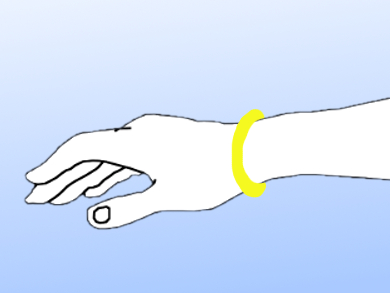Pesticides could pose risks to human health, but measuring the actual pesticide exposure of a person is quite difficult. Thus, studies on the health effects of pesticides often rely on indirect metrics and estimates of effective exposure.
Raf Aerts, Scientific Institute of Public Health (WIV-ISP), Brussels, and University of Leuven, both Belgium, and colleagues have developed a simple approach for the direct measurement of personal exposure to pesticides. The team used cheap silicone wristbands to passively sample the exposure of 30 Belgian volunteers over five days. The pesticides enter the wristbands by diffusion and accumulate over time. A second wristband deposited outdoors near the participants’ home acted as a control for environmental exposure by airborne pesticides. The wristbands were then collected, washed, and the pesticide residues extracted using ethyl acetate. The extracted samples were analyzed using liquid chromatography–tandem mass spectrometry (LC-MS/MS).
The researchers found 31 different pesticide residues in the wristbands, including fungicides, insecticides, and herbicides. Five of the detected compounds are not approved for plant protection in the EU. The insect repellant N,N-diethylmeta-toluamide (DEET) was found in most of the wristbands, both those worn and those deposited outside, indicating that the substance is a common contaminant in the environment.
The overall results indicate that both diet and environmental factors contribute to human pesticide exposure. According to the researchers, silicone wristbands could be useful low-cost samplers for further large-scale studies.
- Silicone Wristband Passive Samplers Yield Highly Individualized Pesticide Residue Exposure Profiles,
Raf Aerts, Laure Joly, Philippe Szternfeld, Khariklia Tsilikas, Koen De Cremer, Philippe Castelain, Jean-Marie Aerts, Jos Van Orshoven, Ben Somers, Marijke Hendrickx, Mirjana Andjelkovic, An Van Nieuwenhuyse,
Environ. Sci. Technol. 2017.
https://doi.org/10.1021/acs.est.7b05039




